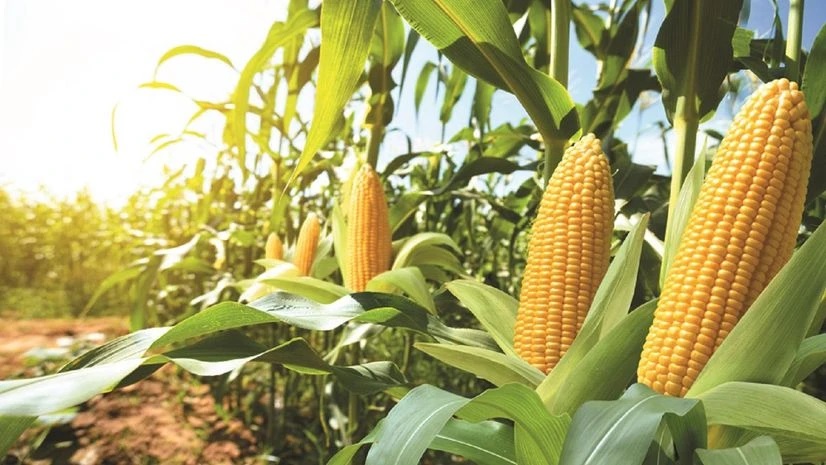
When US Commerce Secretary Howard Lutnick remarked recently that a country of 1.4 billion people “does not buy even a bushel of corn from America,” it triggered a wave of commentary across trade and policy circles. His words, both pointed and revealing, reinforced how agricultural commodities have become instruments of global diplomacy. Yet behind the noise lies a more compelling story. India’s maize sector stands at a turning point. As demand rises rapidly and production growth slows, the world’s fifth-largest producer of maize needs a coherent, long-term strategy to ensure food security, economic stability and new opportunities for farmers.
Maize today is much more than a cereal. It is a key input for India’s poultry and livestock feed, a base for the starch and ethanol industries, and a growing source of rural livelihoods. A study by Tom Kirk, Bruno Santos, Megan Vasko of AbacusBio estimated that India’s maize demand, currently about 44 million tonnes, will climb to nearly 80 million tonnes by 2030. Of this, around 20 million tonnes will go into ethanol and 60 million tonnes into animal feed and starch.
Direct human consumption remains marginal. On the supply side, production stands at roughly 38 million tonnes and is projected to reach only about 51 million tonnes by 2030. That leaves a gap of nearly 30 million tonnes. Prices have already doubled over the past five years, rising from Rs 1,200 to Rs 2,400 per quintal, as domestic shortages combine with global market pressures.
The poultry industry’s projections illustrate the scale of the challenge. Feed demand is expected to reach 115 million tonnes by 2035 and could touch 180 million tonnes by 2047, with more than half of it based on maize. If India does not prepare now, the gap between rising demand and constrained supply could push up food prices and weaken farm incomes.
Seen in this light, the American frustration over India’s reluctance to import US corn appears misplaced. The hesitation is not political but practical. In recent years, several large importers including Japan, South Korea and members of the European Union have tightened their phytosanitary and pesticide-residue norms, leading to the rejection of multiple US shipments. Reports of substandard quality and chemical residues have made global buyers cautious. India’s decision to stay away from such imports is therefore a rational stance rooted in safety and self-reliance, not protectionism. It reflects a desire to strengthen domestic capability rather than rely on uncertain global supplies.
Raising productivity at home must be the first priority. India’s maize yield is around 3.5 tonnes per hectare, compared with the global average of 5.7 tonnes. The experience of states such as West Bengal, Telangana and Bihar shows that higher yields are achievable with better agronomy, timely sowing and efficient irrigation. Disseminating these practices across regions through farmer training and extension can lift national output significantly. At the same time, pests and weeds continue to cause yield losses of more than 25 per cent. Addressing these problems through improved crop-protection measures, integrated pest management and stronger research partnerships is essential for achieving sustained gains. A case in point is American farmers who have access to biotech solutions for insects and weeds that reduce yields. Similar access is essential for Indian farmer to increase yields multifold to meet demand and to compete with American farmers.
Farm-level economics also require careful attention. Labour costs make up between 42 and 58 per cent of total cultivation expenditure in major maize-producing states, which makes the crop vulnerable to cost pressures. Mechanisation, better weed management and more efficient input use can reduce expenses and raise profitability. Farmers, however, will only adopt new methods if they are confident of stable and rewarding markets. Government policies should therefore focus on creating an enabling environment that ensures predictable demand from ethanol and feed industries, transparent procurement systems and price mechanisms that reward productivity.
At the policy level, maize continues to lack the institutional focus given to other strategic crops. India has national missions for pulses, edible oils and millets, but no comparable initiative for maize, despite its growing economic importance. This gap must be filled. A National Maize Mission can bring together the Union and state governments, research institutions, private industry and end-user sectors to develop a coordinated plan for production, productivity and market access. Such a mission should integrate breeding for high-yield and climate-resilient varieties with modern agronomic practices, mechanisation, better storage and logistics, and a stronger marketing ecosystem. The aim should be to meet domestic needs, stabilise prices and build export competitiveness.
Global circumstances make this an opportune moment. As several countries reconsider their dependence on American corn, new markets are opening up. With reliable quality, residue-free cultivation and sound certification systems, India can emerge as a trusted supplier to Asia and Africa. Exports to neighbouring countries and parts of Southeast Asia are already increasing. A focused effort by APEDA, state governments and private exporters can help position Indian maize as a dependable and sustainable option in the global market.
Beyond trade and economics, the issue is one of foresight. The missions for pulses and edible oils have shown that coordinated public-private effort can reduce import dependence and raise farm incomes. Maize deserves a similar approach. Left unattended, the widening gap between supply and demand could become a source of crisis. Addressed in time, it could become an engine of agricultural diversification and rural growth.
Howard Lutnick’s remark may have been intended as a reprimand, but it serves as a reminder of India’s potential. A nation of 1.4 billion people has every reason to be self-sufficient in a crop that sustains its farms, feeds its animals and fuels its industries. India does not need to buy a bushel of corn from anyone. What it needs instead is the vision and resolve to build a resilient maize economy that can stand on its own and serve as a model of self-reliance for the world.
Source : Dailypioneer






